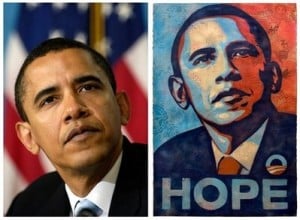In a combined proceeding in which a third person sought re-examination of an issued patent (Re-examination No. 90/005,892) and the patentee sought re-issue of the patent to broaden the claims, the United States Patent and Trademark Office’s Board of Patent Appeals and Interferences held the patent claims invalid on multiple grounds, including that they would have been obvious at the time the invention was made.
In a nonprecedential decision, the US Court of Appeals for the Federal Circuit affirmed the obviousness determination saying the yellow color of the bean pods were pretty much what you’d expect if you took some yellow beans seeds and planted them. In re Pod-Ners LLC (08-1492).
In 1994 Larry Proctor purchased in Mexico a package of non-magical beans, which contained beans of various colors and varieties, including yellow beans, which he brought back to the United States. Over the next three years, he planted and harvested the beans and their producing plants. After three annual plantings and harvestings, he was issued U.S. Patent No. 5,894,079, which he assigned to POD-NERS, L.L.C.
The ‘079 patent contained 15 claims. There were two categories of claims covering the bean itself, which was called “Enola.” One was for a bean with a yellow coat described as within a narrow range of shades of yellow on a particular color chart. The other covered a bean “designated Enola as deposited in” the American Type Culture Collection under an ATCC accession number 209549. Other claims covered a plant produced from an Enola seed, and a method for producing the plant by crossing parent plants, at least one of which came originally from an Enola seed.
A “cultivar” is a cultivated plant that has been selected for desirable, reproducible characteristics which differentiate it from otherwise similar plants of the same species. In this case, the reproducible characteristic that differentiates the Enola beans from other old beans is its particular yellow color.
Claim 8 simply claimed:
A field bean variety of Phaseolus vulgaris that produces seed having a seed coat that is yellow in color, wherein the yellow color is from about 7.5 Y 8.5/4 to about 7.5 Y 8.5/6 in the Munsell Book of Color when viewed in natural light.
A third party filed with the Patent and Trademark Office a petition for re-examination of the patent that also sought to invalidate it. POD-NERS responded by seeking a re-issue of the patent to include eleven additional claims.
The Board held that all of the claims in the ‘079 patent, including those sought to be added through re-issue, were invalid on several grounds, including that they would have been obvious. The obviousness ruling rested on a well-known yellow bean called “Azufrado Peruano 87,” which was disclosed in an article by Salinas. The Board found that the Azufrado Peruano 87 plant and seed reasonably appeared to be substantially the same as the Enola plant and seed. The common characteristics of both included that they are yellow-seeded cultivars.
The Board also relied on a published article by Pallotinni and others stating and comparing the genetic fingerprints of Enola and Azufrado Peruano 87 and concluding that “the DNA fingerprint of ENOLA is identical to a fingerprint found in Mexican yellow-seeded beans of the Peruano group.” Finally, the Board relied on a declaration pointing out that some variations between plants are the result of environmental conditions
The Federal Circuit agreed with the Board that the ‘079 patent yellow beans would have been obvious to one ordinary skill in what POD-NERS identifies as the “breeder-grower” art:
There is no indication that in taking these steps Proctor sought to provide beans of the particular narrow range of yellow that the claims specified. To the contrary, it appears that all Proctor was attempting to do was to reproduce the yellow beans he had acquired in Mexico, and hopefully to improve them.
In a somewhat different context, we held that a prima facie case of obviousness exists when a claimed metal alloy composition and a prior art alloy are similar, even if they do not have precisely overlapping ranges of component metals, absent a showing that they have different properties. See Titanium Metals Corp. v. Banner, 778 F.2d 775, 783 (Fed. Cir. 1985) (concluding that a claim directed to an alloy containing “0.8% nickel, 0.3% molybdenum, up to 0.1% maximum iron, balance titanium” would have been prima facie obvious in view of a reference disclosing alloys containing 0.75% nickel, 0.25% molybdenum, balance titanium and 0.94% nickel, 0.31% molybdenum, balance titanium).
Proctor does not argue that seed coats falling within a particular range of yellow colors have any meaningful impact on the properties of the beans. Nor did he provide objective evidence of secondary considerations that might show non-obviousness—that the particular shades of yellow resulted in substantial sales of the Enola beans, that there was a long need for beans of that color that others were unable to supply, or that others copied the Enola bean. See Graham v. John Deere Co., 383 U.S. 1, 17-18 (1966).
In the end, the Federal Circuit hammered in the last nail saying that “[t]o reject the Board’s obviousness ruling here, would be to deny the Board that very “recourse to common sense” that the Supreme Court there warned against.”


